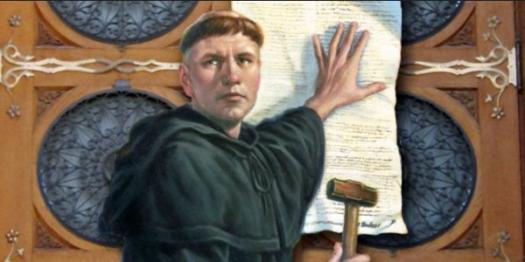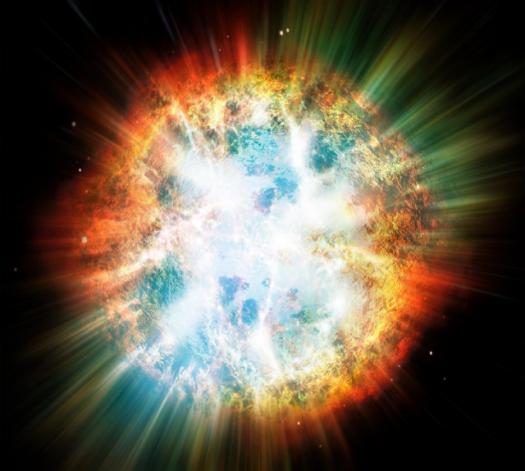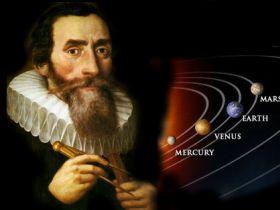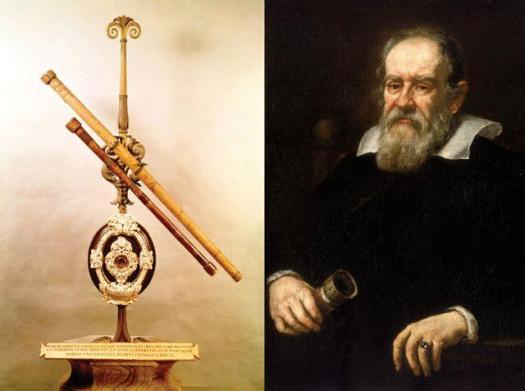History Quiz: The Renaissance Period

The Renaissance, Age of Exploration, Scientific Revolution, and the Reformation!
- 1.
Why did the Renaissance begin in Italy?
- A.
Its location brought lots of money through trade
- B.
Its mountains isolated it from other nations
- C.
The mild climate encouraged outdoor activities
Correct Answer
A. Its location brought lots of money through tradeExplanation
The Renaissance began in Italy because its location brought lots of money through trade. Italy was strategically located in the Mediterranean Sea, making it a hub for trade between Europe, Africa, and Asia. This led to an influx of wealth and cultural exchange, which provided the necessary resources and inspiration for the flourishing of art, literature, and scientific advancements during the Renaissance period. Italy's economic prosperity and access to diverse cultures played a significant role in the development and spread of Renaissance ideas and innovations.Rate this question:
-
- 2.
Who was the first astronomer to say that the sun was in the center of the solar system?
- A.
Kepler
- B.
Galileo
- C.
Copernicus
Correct Answer
C. CopernicusExplanation
Copernicus was the first astronomer to propose the heliocentric model, which states that the sun is at the center of the solar system. His book "De Revolutionibus Orbium Coelestium" published in 1543 presented this revolutionary idea, challenging the prevailing geocentric model. Copernicus' theory laid the foundation for modern astronomy and had a significant impact on our understanding of the universe. His work paved the way for future astronomers like Kepler and Galileo to further develop and refine the heliocentric model.Rate this question:
-
- 3.
The ____ family were rich ____ of the arts who helped the ____ arts to thrive.
- A.
Medici, partisans, Renaissance
- B.
Mandini, traders, Renaissance
- C.
Maroni, investors, Scientific
Correct Answer
A. Medici, partisans, RenaissanceExplanation
The Medici family were rich supporters of the arts who helped the Renaissance arts to thrive.Rate this question:
-
- 4.
What was one reason why the Renaissance began in Italy?
- A.
The Church was powerful and commissioned lots of art, architecture, and scientific experimentation
- B.
Rich city-states encouraged trade, art, and the study of humanities
- C.
There were low taxes, therefor people had more money to spend on art and education
Correct Answer
B. Rich city-states encouraged trade, art, and the study of humanitiesExplanation
During the Renaissance, Italy experienced a flourishing of trade, art, and the study of humanities due to the presence of wealthy city-states. These city-states, such as Florence, Venice, and Milan, had accumulated significant wealth through trade and commerce. This wealth allowed them to patronize artists, architects, and scholars, leading to a vibrant cultural and intellectual environment. The patronage of these city-states attracted talented individuals from various fields, fostering innovation and creativity. This favorable environment, supported by the financial resources of the city-states, played a crucial role in the emergence and development of the Renaissance in Italy.Rate this question:
-
- 5.
How did Renaissance thinkers spread their ideas?
- A.
New schools of philosophy
- B.
The printing press
- C.
Art dealers
Correct Answer
B. The printing pressExplanation
During the Renaissance, thinkers were able to spread their ideas through the invention of the printing press. This revolutionary technology allowed for the mass production of books and pamphlets, making it easier to disseminate knowledge and reach a wider audience. The printing press enabled Renaissance thinkers to share their ideas more widely, leading to a greater exchange of knowledge and the spread of new philosophical and intellectual movements.Rate this question:
-
- 6.
What allowed Italy's city-states to explore art and the humanities?
- A.
More art schools were established throughout Italy
- B.
The Peace of Lodi meant that city-states could stop spending money on wars
- C.
One of the effects of the plague was that more people could attend school
Correct Answer
B. The Peace of Lodi meant that city-states could stop spending money on warsExplanation
The Peace of Lodi was a treaty signed in 1454 that brought stability to Italy by ending decades of warfare between the major city-states. With the cessation of hostilities, the city-states were able to redirect their resources and funds towards other endeavors, such as the exploration of art and the humanities. This newfound peace allowed for the establishment of more art schools throughout Italy and created an environment conducive to the flourishing of artistic and intellectual pursuits.Rate this question:
-
- 7.
What area of study, as shown by the picture, became more advanced during the Renaissance?
- A.
Dermatology
- B.
The study of infectious disease
- C.
The study of anatomy
Correct Answer
C. The study of anatomyExplanation
During the Renaissance, there was a significant advancement in the study of anatomy. This can be seen in the picture, which likely depicts anatomical dissections and illustrations. The Renaissance period was characterized by a renewed interest in humanism and scientific inquiry, leading to a greater understanding of the human body. Prominent figures like Leonardo da Vinci and Andreas Vesalius made significant contributions to the field of anatomy during this time, through their detailed anatomical drawings and dissections. Therefore, the study of anatomy became more advanced during the Renaissance.Rate this question:
-
- 8.
What event does the picture represent?
- A.
Martin Luther defending himself of the charge of heresy.
- B.
Martin Luther accusing the Church of heresy.
- C.
Martin Luther posting his 95 theses to a church door.
Correct Answer
C. Martin Luther posting his 95 theses to a church door.Explanation
The picture represents Martin Luther posting his 95 theses to a church door. This event is significant because it marked the beginning of the Protestant Reformation. Martin Luther's act of nailing his theses to the door of the Wittenberg Castle Church in 1517 was a public declaration of his grievances against the Catholic Church and its practices. This action sparked widespread debate and criticism, leading to the formation of new Protestant denominations and a significant shift in religious power and authority in Europe.Rate this question:
-
- 9.
Copernicus was a Polish _____ who said that the universe is _____
- A.
Monk, heliocentric
- B.
Priest, geocentric
- C.
Monk, elliptical
Correct Answer
A. Monk, heliocentricExplanation
Copernicus was a Polish monk who said that the universe is heliocentric. This means that he believed the Sun is at the center of the solar system, with the planets, including Earth, orbiting around it. This was a significant departure from the prevailing belief at the time, which was geocentric, meaning that Earth was considered to be the center of the universe. Copernicus' heliocentric model laid the foundation for modern astronomy and challenged long-held beliefs about the structure of the universe.Rate this question:
-
- 10.
______ was an astronomer who was the first to record seeing a _______
- A.
Tycho Brahe, super nova
- B.
Galileo, black hole
- C.
Kepler, super nova
Correct Answer
A. Tycho Brahe, super novaExplanation
Tycho Brahe was an astronomer known for his accurate and detailed observations of celestial events. He was the first to record seeing a supernova, which is a powerful and rare explosion of a star. Brahe's observations of the supernova in 1572 challenged the prevailing belief that the heavens were unchanging and provided evidence for the idea that celestial bodies could undergo dramatic changes.Rate this question:
-
- 11.
_____ was at the heart of the Renaissance, which focused on the ______ instead of ______
- A.
Humanism, world, religion
- B.
Art, beautiful, the frightening
- C.
Humanities, classical Greek philosophers, religion
Correct Answer
A. Humanism, world, religionExplanation
During the Renaissance, Humanism was a central ideology that emphasized the importance of human achievements and potential. It shifted the focus from religious matters to worldly concerns, such as individualism, secularism, and the exploration of human knowledge and capabilities. Humanism celebrated the beauty and potential of the world and human existence, rather than being solely preoccupied with religious doctrines and beliefs.Rate this question:
-
- 12.
What is a Humanist's philosophy about life?
- A.
Life should be devoted to serving the lord
- B.
Life should be enjoyed, not suffered through
- C.
Education and religion are equally important to devote one's life to
Correct Answer
B. Life should be enjoyed, not suffered throughExplanation
A Humanist's philosophy about life is that it should be enjoyed, not suffered through. Humanism emphasizes the value and potential of human beings and focuses on promoting human well-being and happiness. It rejects the idea of life being solely devoted to serving a higher power or suffering for religious reasons. Instead, Humanists believe in living a fulfilling and meaningful life, embracing joy, pleasure, and personal fulfillment while also valuing education and critical thinking.Rate this question:
-
- 13.
Who was Johannes Kepler?
- A.
He was an astronomer who said that planets move in elliptical orbits
- B.
He was an astronomer who said that the universe is heliocentric
- C.
He was an astronomer who said that planets have a gravitational pull
Correct Answer
A. He was an astronomer who said that planets move in elliptical orbitsExplanation
Johannes Kepler was an astronomer who proposed that planets move in elliptical orbits. This theory, known as Kepler's laws of planetary motion, revolutionized our understanding of the solar system. Prior to Kepler, it was believed that planets moved in perfect circles. However, Kepler's observations and mathematical calculations showed that planetary orbits are actually elliptical in shape. This discovery laid the foundation for Isaac Newton's later work on gravity and the laws of motion.Rate this question:
-
- 14.
What is heresy?
- A.
Contradicting the bible, punishable by death during the Inquisition
- B.
Contradicting the laws of physics, as expressed by Isaac Newton
- C.
Denying the existence of god, punished by burning the offender at the stake
Correct Answer
A. Contradicting the bible, punishable by death during the InquisitionExplanation
During the Inquisition, heresy referred to the act of contradicting the teachings of the Bible. This was considered a serious offense and was punishable by death. The Inquisition was a period of intense religious persecution, and anyone who went against the established beliefs of the Church was seen as a threat. Those accused of heresy were often subjected to harsh interrogations and trials, and if found guilty, they could face execution. This answer accurately describes the historical context and consequences of heresy during the Inquisition.Rate this question:
-
- 15.
What was the Inquisition?
- A.
An era when conquistadors explored "new worlds"
- B.
An era when the Church tortured and killed heretics
- C.
An era when the arts and humanities flourished
Correct Answer
B. An era when the Church tortured and killed hereticsExplanation
The Inquisition refers to a period in history when the Church engaged in the torture and execution of individuals deemed heretics. This era was characterized by the Church's efforts to suppress dissent and maintain religious orthodoxy. The Inquisition was notorious for its use of brutal methods to extract confessions and punish those who deviated from the established beliefs. It was a dark and oppressive time, marked by widespread fear and persecution.Rate this question:
-
- 16.
Who was Galileo?
- A.
An astronomer who proved that there is no center to the universe.
- B.
An astronomer who invented the telescope and proto-satellite.
- C.
An astronomer who was forced to recant for saying that the earth spins and orbits around the sun.
Correct Answer
C. An astronomer who was forced to recant for saying that the earth spins and orbits around the sun.Explanation
Galileo was an astronomer who was forced to recant for saying that the earth spins and orbits around the sun. This answer accurately describes Galileo's situation during the time when he challenged the geocentric view of the universe. He faced opposition from the Catholic Church and was eventually forced to recant his heliocentric beliefs to avoid punishment. This event is a significant part of Galileo's life and his contributions to the field of astronomy.Rate this question:
-
- 17.
What is one way the Renaissance changed man's view of man?
- A.
People expressed an interest in democratic forms of government, demanding a stronger role in gov't
- B.
People began to see themselves as individuals, governed by laws of nature and science
- C.
Renaissance thinkers developed and spread the idea of free will
Correct Answer
B. People began to see themselves as individuals, governed by laws of nature and scienceExplanation
During the Renaissance, there was a shift in how people perceived themselves. They began to view themselves as individuals rather than just a part of a collective society. This change in perspective was influenced by the Renaissance thinkers who emphasized the importance of humanism and the study of nature and science. As a result, people started to understand that they were governed by the laws of nature and science, which led to a greater sense of individuality and self-awareness.Rate this question:
-
- 18.
What was the Reformation?
- A.
A movement that led to the sale of indulgences
- B.
A movement to reconquer Jerusalem in the name of Christianity
- C.
A movement that questioned the Catholic Church on issues of morality and authority
Correct Answer
C. A movement that questioned the Catholic Church on issues of morality and authorityExplanation
The Reformation was a movement that emerged in the 16th century and challenged the authority and practices of the Catholic Church. It questioned the moral conduct of the church, such as the sale of indulgences, and challenged its authority in interpreting religious doctrine. This movement, led by figures such as Martin Luther and John Calvin, resulted in the establishment of Protestant churches and a significant split within Christianity. The Reformation had a profound impact on religious, political, and social aspects of European society, leading to religious wars and the reshaping of religious beliefs and practices.Rate this question:
-
- 19.
How did Martin Luther change religion for Christians?
- A.
He translated the Bible
- B.
He edited the Bible to remove justification for slavery
- C.
He was the first to baptize people
Correct Answer
A. He translated the BibleExplanation
Martin Luther changed religion for Christians by translating the Bible. This allowed people to have access to the scriptures in their own language, rather than relying on Latin translations which were only accessible to the clergy. This enabled individuals to read and interpret the Bible for themselves, leading to a greater emphasis on personal faith and a challenge to the authority of the Catholic Church. Luther's translation of the Bible played a significant role in the Protestant Reformation and the development of various Protestant denominations.Rate this question:
-
Quiz Review Timeline +
Our quizzes are rigorously reviewed, monitored and continuously updated by our expert board to maintain accuracy, relevance, and timeliness.
-
Current Version
-
Mar 21, 2023Quiz Edited by
ProProfs Editorial Team -
Jun 02, 2016Quiz Created by
Crosenzweig
- African American History Quizzes
- Age Of Exploration Quizzes
- American History Quizzes
- Asian History Quizzes
- Australian History Quizzes
- Black History Quizzes
- Canadian History Quizzes
- Chinese Dynasty Quizzes
- Chinese History Quizzes
- Civilization Quizzes
- Colonialism Quizzes
- Colonization Quizzes
- Elizabethan Era Quizzes
- European History Quizzes
- French Revolution Quizzes
- Georgia History Quizzes
- Gothic Quizzes
- History Midterm Quizzes
- Indian History Quizzes
- Mesopotamia Quizzes
- Philippine History Quizzes
- Revolution Quizzes
- Roman History Quizzes
- Slavery Quizzes
- The Rise Of Hitler Quizzes
- United States Constitution Quizzes
- War Quizzes
- Westward Expansion Quizzes
- World History Quizzes
- World War I Quizzes
- World War II Quizzes
 Back to top
Back to top







